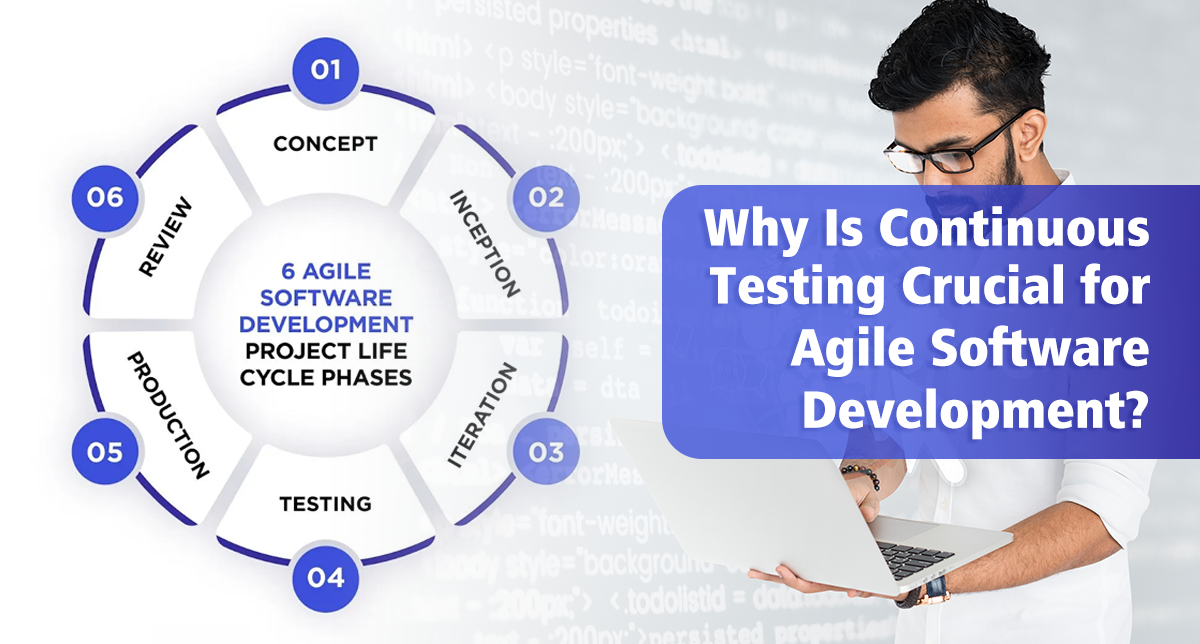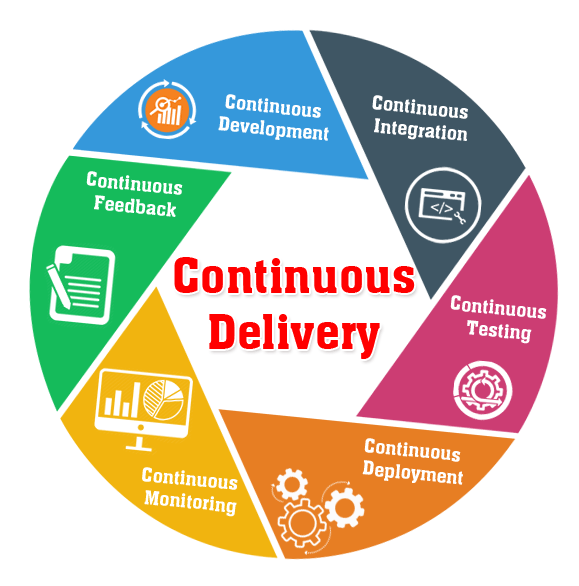Why Is Continuous Testing Crucial for Agile Software Development?

Introduction
In the fast-paced digital world of today, where users are spoiled by endless options and changing preferences in the blink of an eye, speedy delivery without sacrificing quality has never been more crucial. Agile software development which means an iterative and incremental approach to software development offers a way to release the software faster.
However, organizations have to adopt Continuous Testing (CT) at all levels in the Software Development Life Cycle (SDLC) to leverage the true power of Agile methodologies. It makes software delivery faster and better while narrowing down the distance between development and deployment, leading to the least defects yet efficient delivery.
In this blog, we will discuss the basics of Continuous Testing (CT), its importance in agile software development, the core components of CT, the challenges of implementing, and the best practices of CT for effective software development.
What is Continuous Testing?

Continuous Testing is the process of executing automated tests at every stage of the software development cycle to provide immediate feedback on business risks associated with a release candidate. Continuous Testing (CT), in contrast to traditional testing methods, integrates testing within the development process rather than waiting until the end of the SDLC. It ensures software is always being tested and updated, which is one of the main things, referring to most Agile concepts that are continuous improvement, rapid iterative cycles, etc.
The Necessity of Continuous Testing in Agile Software Development
Under this point, we describe how Continuous Testing will ensure early detection of defects, save costs, and promote collaboration amongst team members so that everyone works together toward the common goal of completing the project faster through Agile development while also having reliable, and good quality code.
1. Early Defect Detection and Cost Reduction
Continuous Testing is all about early detection and fixing of defects. Research shows that a bug fixed after the product release will cost up to 100x its original price in repair costs compared to the one during the early stages of the development process. Continuous Testing is the integration of automated tests into CI/CD pipelines so that issues can be detected much earlier. It minimizes defects and reduces the chances of objects getting more costly downstream issues.
2. Improved Collaboration and Communication
Agile development is a collaborative process. The constant communication between the developer, tester, and stakeholders is what gets emphasized by Continuous Testing. Testers provide faster feedback on the quality of the code to developers and that’s why, testers closely work with developers. When different teams across development come together, it helps build a collaborative ecosystem that creates shared knowledge, so that testing becomes part of the overall process and not an isolated event.
3. Faster Time-to-Market
Continuous Testing automates and streamlines test activities as part of the development pipeline, causing a rapid acceleration of the SDLC. It allows the fixing of defects in less time to speed up the release process by this seamless integration. This ability to deploy fast gives a significant edge in competitive markets where rapid deployment is the key.
4. Enhanced Code Quality and Reliability
Continuous Testing covers both functional and non-functional testing aspects such as performance, security, and regression. Such extensive test coverage ensures that the code provides higher quality and there are not many bugs found in post-production. This ensures reliable software that satisfies user needs and business requirements.
Core Components of Continuous Testing
Ideal elements of Continuous Testing are test automation, CI, CD, and parallel testing that altogether simplify the processes while allowing more efficiency and software delivery without disruptions.
Test Automation

At the heart of Continuous Testing lies automation. It gives fast and consistent feedback, as automated test scripts are run every time there is a new change in the code. Although automation includes many tests such as unit, integration, and performance tests, manual testing is essential for exploratory and creative testing.
Continuous Integration (CI)

Continuous Testing is highly dependent on Continuous Integration. Code changes from multiple developers are merged into a shared repository, which initiates automated builds and tests. This assists teams in identifying integration problems quickly, ensuring that the codebase remains stable and uniform.
Continuous Delivery (CD)

Continuous Delivery takes CI one step further by automating deployments of the code to testing and staging environments. This guarantees that every change to the code is production-ready. Continuous Testing under CD determines whether we can release the software with confidence, thus eliminating the risk related to deploying untested code.
Parallel Testing

In addition to speeding up the process, Continuous Testing takes it a step further using parallel testing strategies, running multiple test cases simultaneously. This is necessary – especially for regression and performance tests that could take hours to run so that testing can be done in an efficient way while achieving proper test coverage.
Challenges in Implementing Continuous Testing
Continuous Testing is beneficial, but it introduces certain challenges regarding its implementation in agile software development.
Tool Selection and Integration: In Agile methodology and DevOps framework, it is critical to choose the right testing tools. Finding a tool that can help improve productivity while ensuring integration with end-to-end toolsets is often a challenge as well.
Cultural Shift: Moving from a traditional testing methodology to Continuous Testing calls for a massive change in mindset among teams.
Test Maintenance: As the codebase changes, test cases must change too which can be frustrating for developers.
Environment Management: To extract genuine results, the test environments must fully align with production.
Flaky Tests: Non-deterministic tests that occasionally fail can slow down the automation journey and require additional test management to identify genuine issues.
Best Practices for Effective Continuous Testing
Continuous testing is all about shifting left, automation with a strategy, parallelizing tests, maintaining scripts, service virtualization, and continuous monitoring & analyzing for the best return on investment.
Adopt a “Shift-Left” Approach: Implement testing as early as possible in the SDLC (in design and coding) to discover potential problems before they become larger defects.
Automate Strategically: Focus automation on key tests that deliver the highest value, then increase coverage.
Parallelize Tests: For larger test suites, run the tests faster by executing them in parallel.
Maintain Test Scripts: Review your test scripts often and refactor them to make sure they are efficient and updated.
Use Service Virtualization: Create a virtualized testing environment to simulate dependencies that might not otherwise be available so that comprehensive test coverage is ensured.
Monitor and Analyze: Make use of the monitoring tools to track the performance of your tests, and take action as soon as there is a failure or bottleneck.
The Role of Continuous Testing in DevOps

Continuous Testing is an integral part of DevOps which automates the validation process to make sure that every change in code passes through strict checks before being deployed into the production environment. It is in a way an outer jacket for CI/CD giving feedback for code quality and preparedness. Such alignment not only speeds releases but also improves the certainty of the product that gets released.
FAQs
1. Why is continuous testing important?
Continuous Testing is important because it helps teams to detect the defects much earlier which in turn reduces the cost and provides a better and high-quality code. It improves collaboration, helps in faster delivery, and increases the reliability of software products by integrating testing at every step of SDLC, thereby improving overall software performance as you work with Agile & DevOps.
2. What is the primary purpose of continuous testing?
Continuous testing in software development refers to identifying risks as early as possible, while rapid feedback is provided and the quality of the product is improved by integrating testing into all stages of the development process. This leads to faster delivery and more consistent, high-quality software.
3. What is the difference between continuous testing and test automation?
Continuous Testing differs from Test Automation primarily in the scope and purpose. Test automation applies to automating the specific test cases only to minimize manual efforts. Continuous testing, in comparison, embeds automated tests into the development pipeline, to create constant feedback on risk, so that the software is ready to get deployed, quicker and with confidence.
Conclusion
Continuous Testing is not something optional anymore, it has become a crucial part of Agile and DevOps methodologies. Integrating testing at every development stage enables teams to deploy reliable software at high speed, giving the business what it wants while also satisfying user needs. By adopting Continuous Testing, organizations are not only able to reduce costs and increase collaboration, but they also can gain better scalability, reliability, and speed-to-market expertise. For any Agile team that wants to remain competitive, Continuous Testing has become a mandatory step in the software development process.
